
Trubetskoy Bastion Prison - a former prison in the Peter and Paul Fortress, which existed for almost 50 years and was the main place of detention of political prisoners in tsarist Russia.
Today, the prison houses a museum, the exposition of which is dedicated to the history of the main political prison of tsarist Russia.
The full name of the museum: "The history of the Trubetskoy Bastion Prison".
Initially, on the site of the prison was the Trubetskoy bastion-a defensive structure of the Peter and Paul Fortress, intended for conducting frontal and flanking fire. The bastion was named after the associate of Peter I - Yu. Yu. Trubetskoy, who supervised the construction.
The bastion was a wooden-earth fortification, which in 1708-1709 was rebuilt in stone according to the project of the architect and engineer-fortifier D. Trizini.
In the first quarter of the 18th century, the bastion's casemates were used as prison cells and torture chambers of the Secret Chancery. In 1718, the son of Peter I, Tsarevich Alexei, was kept in the casemates. At the beginning of 1826, 25 solitary cells were set up in different parts of the bastion to imprison the Decembrists.
A full-fledged prison building for the detention of political prisoners was built in 1870-1872 by engineers K. P. Andreev and M. A. Pasypkin on the site of the dismantled internal walls and casemates of the Trubetskoy bastion (hence the name of the prison).
The prison was a two-story, pentagonal building with a closed courtyard. The prison originally had 72 solitary cells, and since 1878-69 solitary cells, two punishment cells, a chapel, a library, zeykhgauz (storage rooms), a kitchen and the office apartment of the head of the prison. There was a prison bathhouse in the courtyard.
Exterior view of the current structure of the Trubetskoy Bastion prison (entrance to the museum)
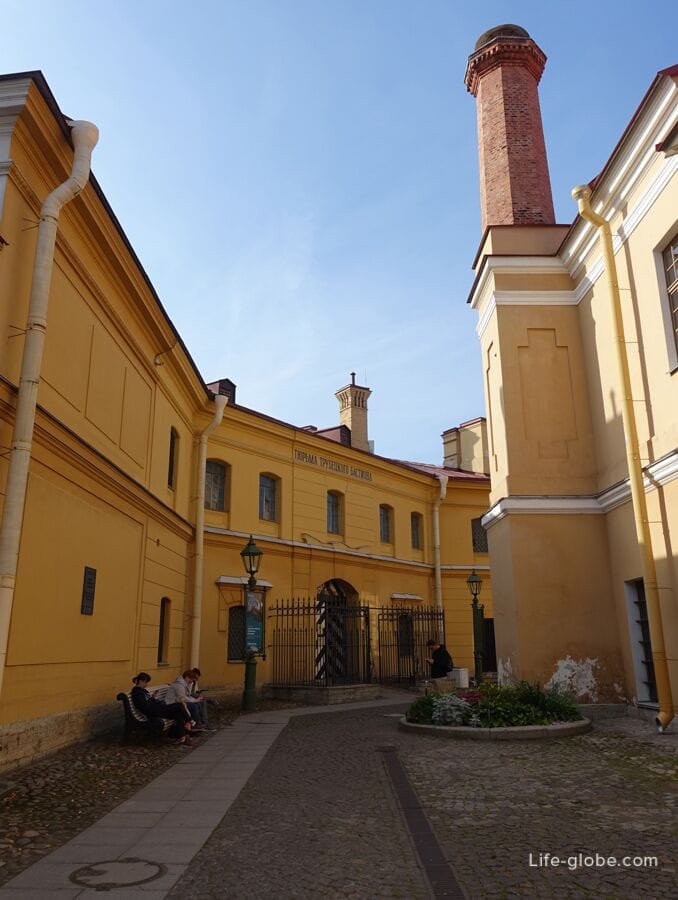
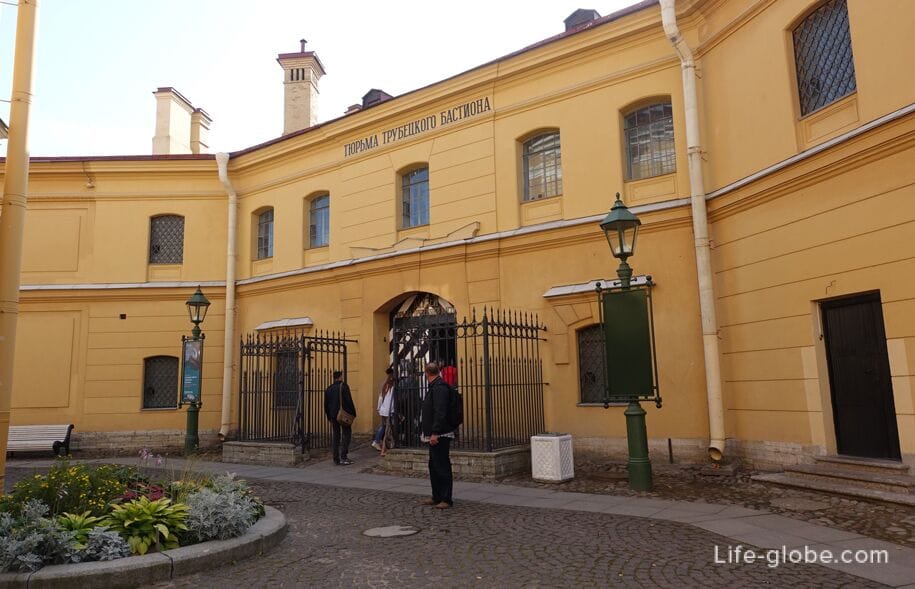
The prison served as the main investigative prison for those accused of political crimes - in the position of prisoners under investigation, prisoners were held in prison until sentencing. The prison had a strict system of solitary confinement (1 cell - 1 person), the purpose of which was to completely isolate the prisoner from the outside world and other prisoners. The defendants were prohibited from doing anything other than reading; they were allowed to improve their food at their own expense, to receive books with uncut pages from the will, to meet and correspond with relatives, and to smoke. Constant surveillance was carried out by the prison guards through a peephole in the cell doors. For violation of the regime, penalties were determined, both officially approved and tacit. The official ones were: incarceration in a dark cell for up to one week, prohibition of reading books and smoking, deprivation of correspondence and visits. Unspoken punishments: the use of a straitjacket, beatings, the presence of a gendarme in the cell for direct observation.
In 1880-1889, in the Trubetskoy bastion, political prisoners (convicts) who were sentenced to hard labor were held simultaneously with the prisoners under investigation, the purpose of which was to subject the convicts to a heavier punishment than in Siberian prisons. For convicts, more severe conditions of detention were provided in comparison with those under investigation - they were forbidden: any work and activities, books (except the Bible), smoking, meetings and correspondence, they were also provided with more meagre food, without the possibility of improvement at their own expense, and their bed consisted of felt instead of a mattress, and a pillow stuffed with straw. For misdemeanors, convicts could be imprisoned in a punishment cell, shackled, flogged with whips or rods, and for crimes - punished with whips up to 80 blows or spitzruten up to 4000 blows.
During the existence of the prison, more than one and a half thousand prisoners passed through its cells, including many figures of the Russian revolutionary liberation movement. During the revolution of 1905-1907, the writer M. Gorky was in prison. After the February Revolution of 1917-ministers of the tsarist government; in October 1917-members of the Provisional Government, participants in the Junker revolt, then figures of the banned Cadet party and others dissatisfied with the power of the Bolsheviks. By that time, the prison cells, due to lack of space, had become a place of mass incarceration, and solitary confinement was applied only to individual prisoners.
The Trubetskoy Bastion prison was officially closed in March 1918. However, the building was used for mass incarceration of former officials, military, nobles, representatives of the clergy and other "non-proletarian" segments of the population until 1921. Its last prisoners were the participants of the Kronstadt mutiny.
In 1924, the prison was finally closed and turned into a museum.
The museum's exposition tells about the history of the Trubetskoy Bastion prison: the fate of the prisoners who passed through its cells, about the peculiarities of the regime and conditions of detention of prisoners. A separate section of the museum is dedicated to prisoners of the Soviet era.
The museum contains archival materials and photographs; there are models, multimedia programs, audio recordings with the memories of prisoners and, most interestingly, the walls, cells and corridors of the prison that have survived to this day, which clearly and eloquently testify to the past of this place.
The museum has two floors, along the corridors of which there are former cells of prisoners under investigation and convicts with an imitation of the situation of the cells, you can also see the reception room, the prison chapel, the library and the punishment cell. On the second floor there is an exhibition "The history of the Trubetskoy Bastion Prison in photos" and you can watch the film "Trubetskoy Bastion Prison - Russian Bastille".
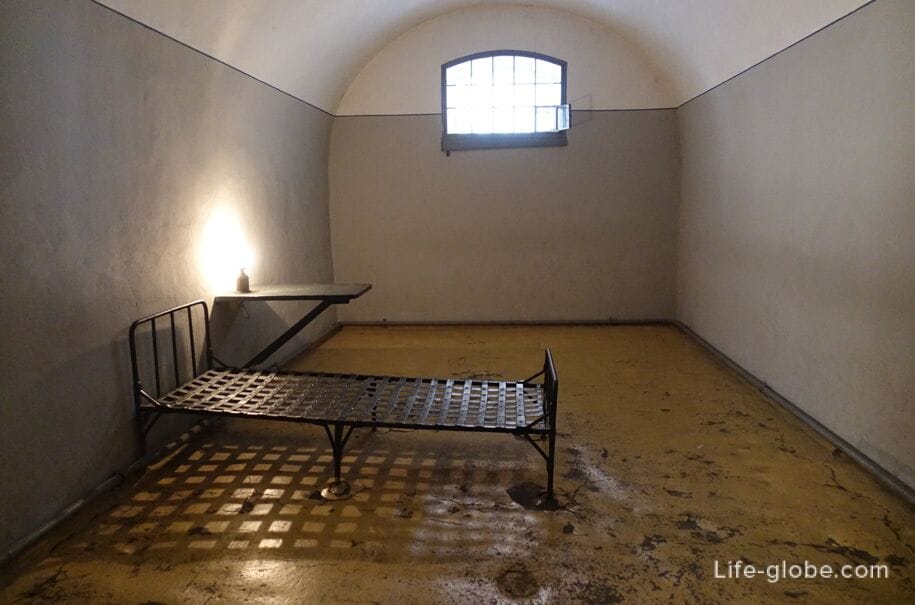
In some cameras, you can go in and, if you want, take a few stage photos
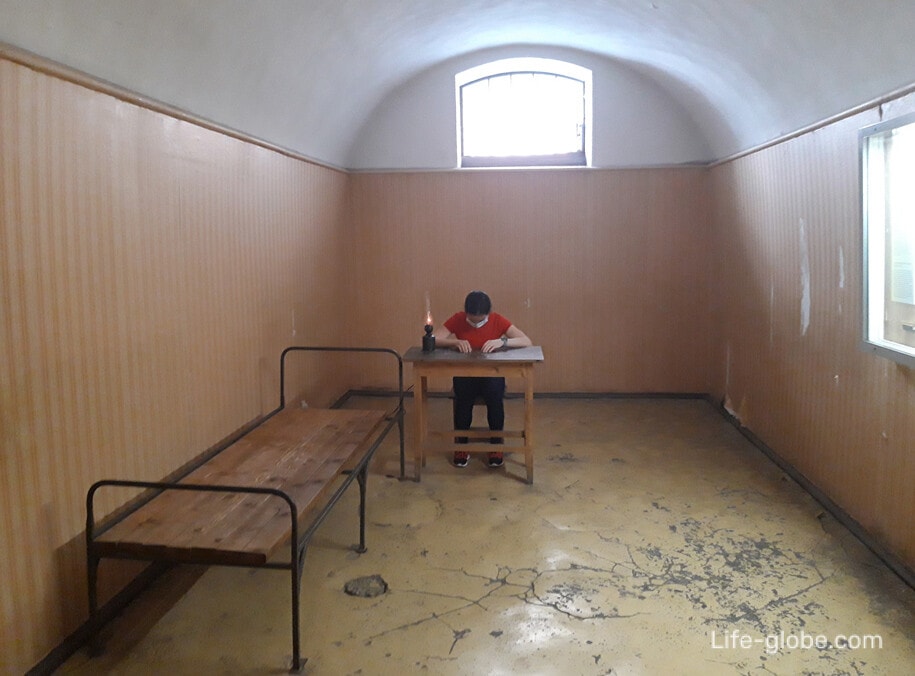
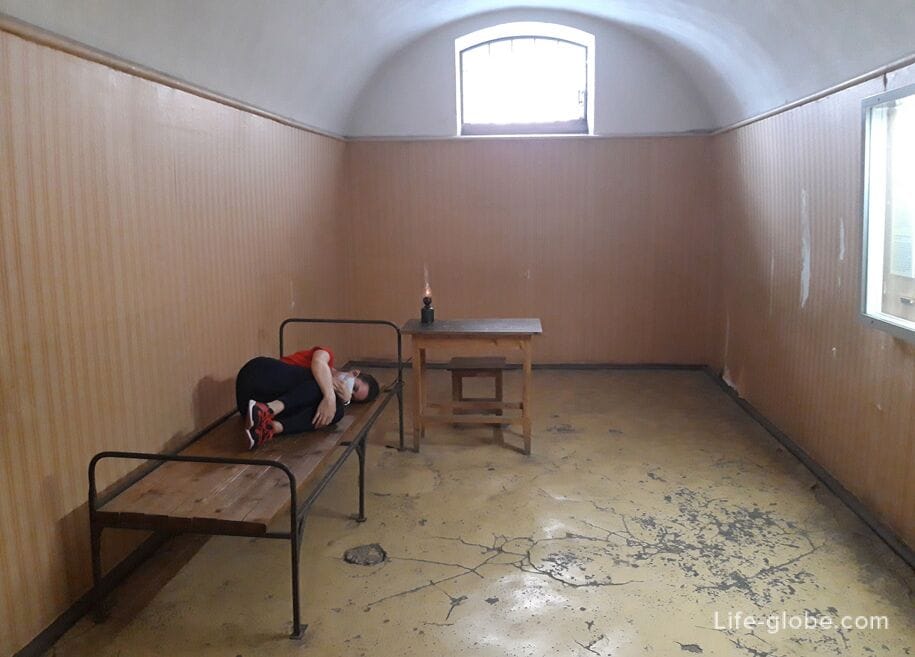
You can't go into the other cells, but you can look through the window in the door
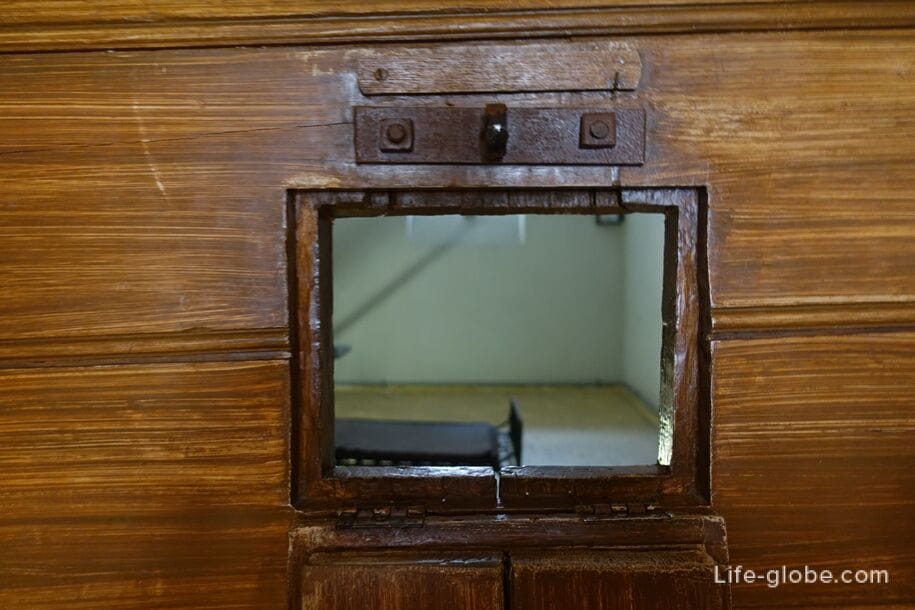
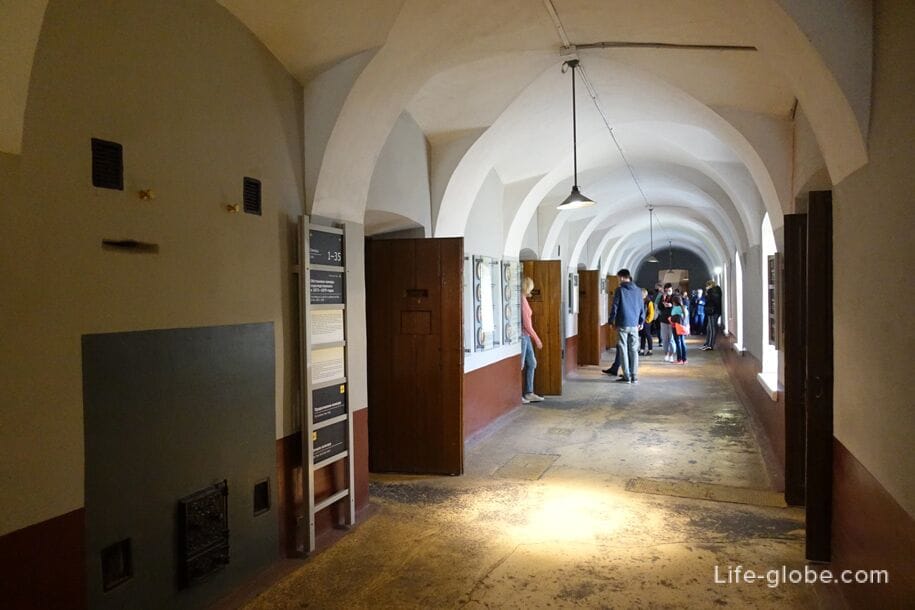

In the reception area, the internal security guards and the head of the prison received the prisoners.
The prisoner was stripped of all his personal belongings, stripped naked, subjected to a thorough humiliating search, and then dressed in official clothes.
The head of the prison entered information about the new arrivals in a special journal, read out instructions on the procedure for keeping prisoners in the Trubetskoy Bastion prison and gave instructions on which cell to place the prisoner in.
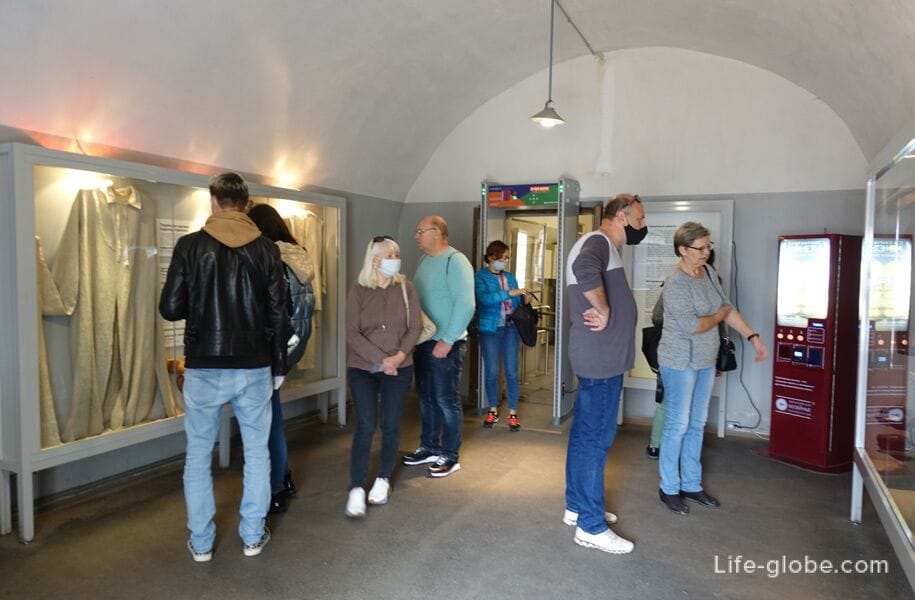
The room presents: prison clothing of convicts in the 1880s and prison clothing of prisoners under investigation.
In the Trubetskoy Bastion, the defendants had to wear official clothes, unlike in other prisons, where the disguise of the arrested was not mandatory. Since the prison was located in the military department, hospital officers ' clothing was used for the defendants: linen long johns and a shirt, a cloth robe, stockings, and leather shoes. On dates and walks, the prisoners were taken out in their own clothes, which were stored in one of the prison's zeichhouses.
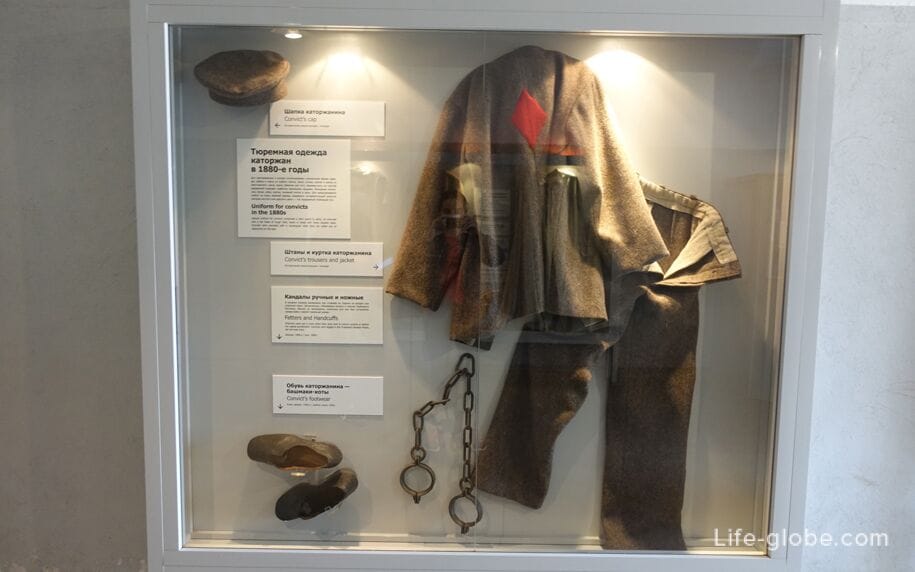

The room also presents a small model of the search and disguise of a prisoner in the reception room of the Trubetskoy Bastion prison in the 1890s.
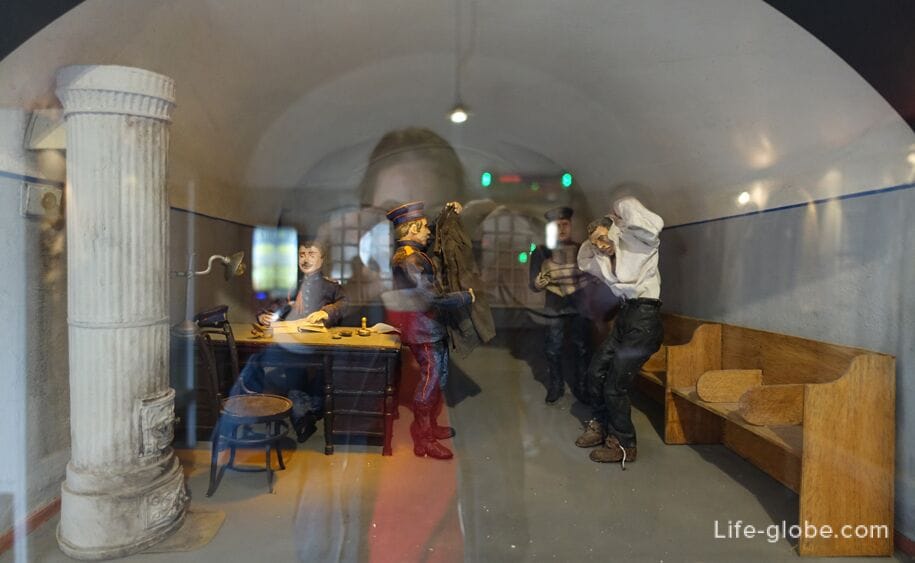
Initially, the walls of the prison cells were covered with wallpaper, under which there was sound insulation - two layers of felt with a metal mesh between them. A screen was attached to the window, which had two iron frames and a grating, to prevent birds from flying into the cell. Under the window was a chute with a bucket, where water flowed from the ice that melted on the windows.
Each cell contained an iron bed with a boardwalk, a wooden table, and a stool. There was a washstand and a washstand by the door.
In the dark, the room was lit by a kerosene lamp, which was not extinguished at night, so that the guards could see the camera through the peephole.
The prisoner's bed consisted of a hair mattress, a wool blanket, two sheets, and two feather pillows in pillowcases.
In the cell, it was allowed to have personal belongings and products that were supposed to be on the table: books, tobacco, a comb, a mug, a teapot, as well as bread and sugar purchased at their own expense.
Food was served to the prisoners directly in the cells, through a square window in the cell door.

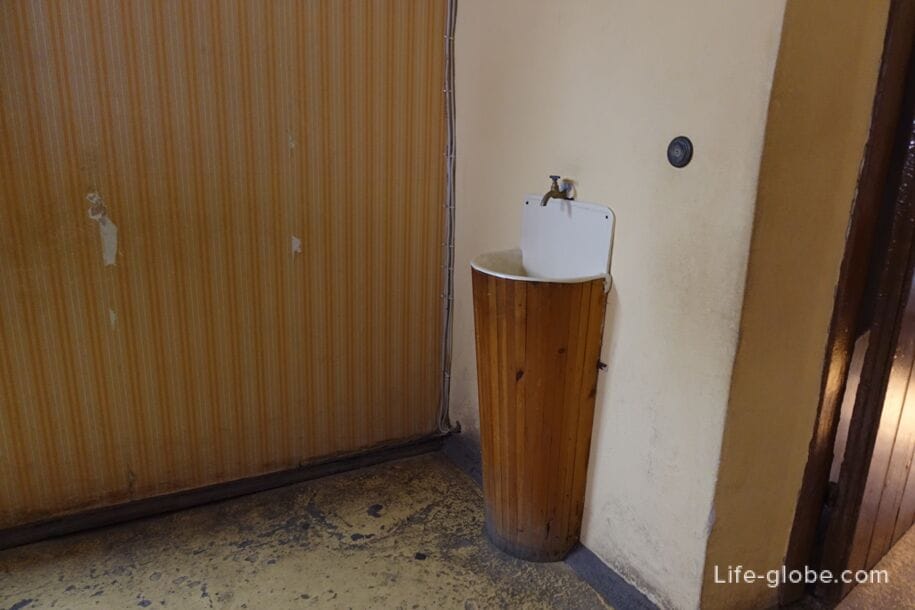
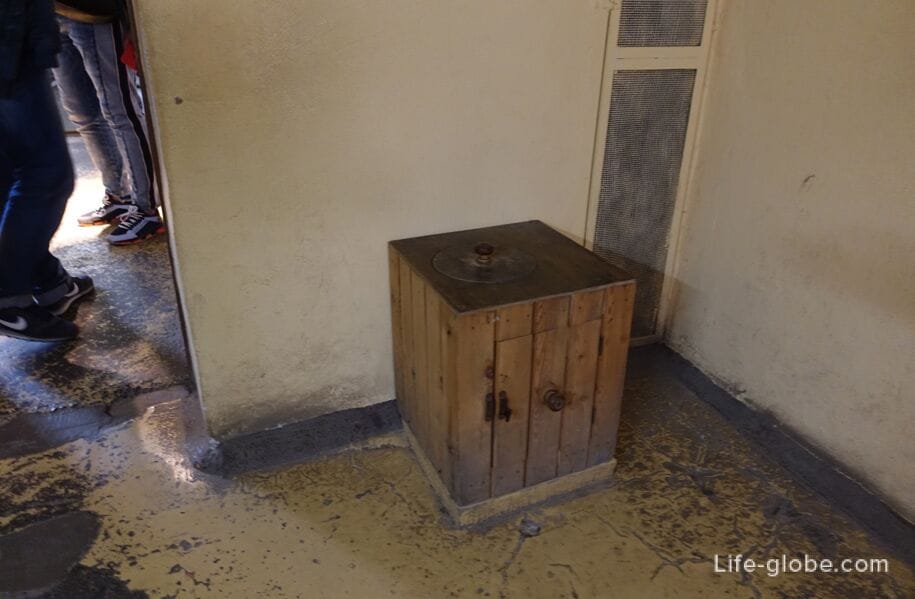
Visual device for sound insulation of the camera
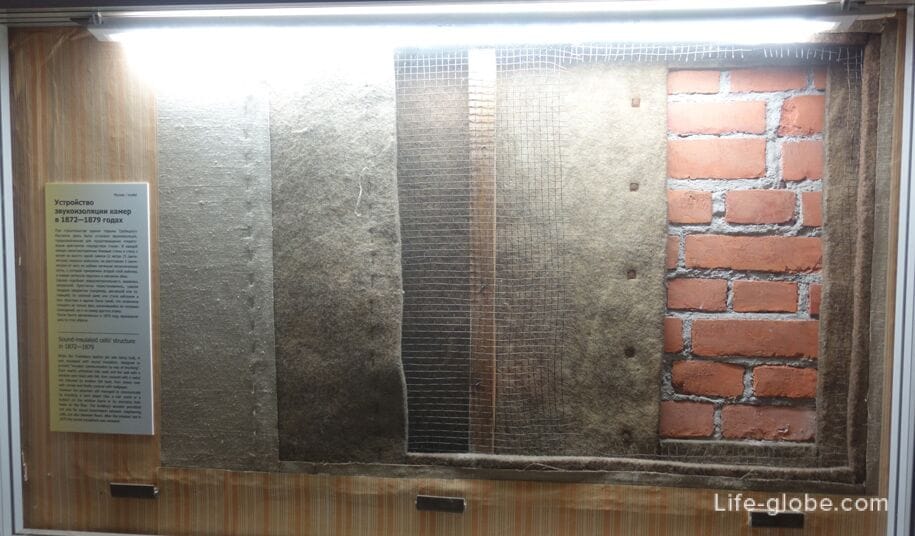
In 1879, all the cells of the prison were converted, and their walls were plastered and painted.
In each cell, the table was replaced with an iron sheet embedded in the wall and a new iron bed was installed, attached to the floor and wall. This furniture has been preserved to this day.
At the door of the cell there was a parashe and a washstand, fastened to the wall with strips of iron.


Those serving hard labor were held in the same cells of the Trubetskoy Bastion prison as those under investigation, but the situation of the cells was different.
The convict's bed consisted of a felt mat or straw mattress, a pillow stuffed with straw, and a coarse cloth blanket. There was no bed linen.
Personal items, tobacco, comb, and soap were not allowed. Only a Bible and a government-issued metal mug were issued.
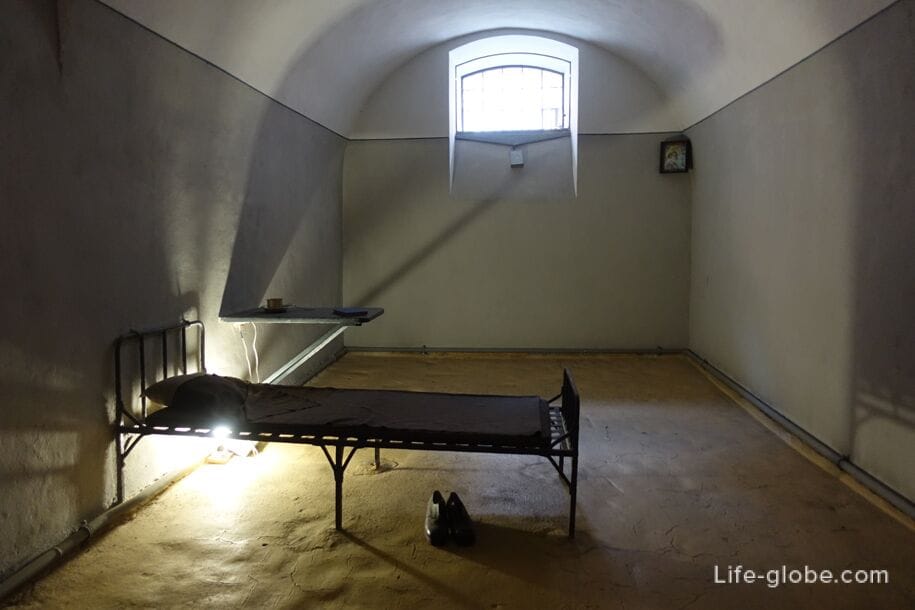
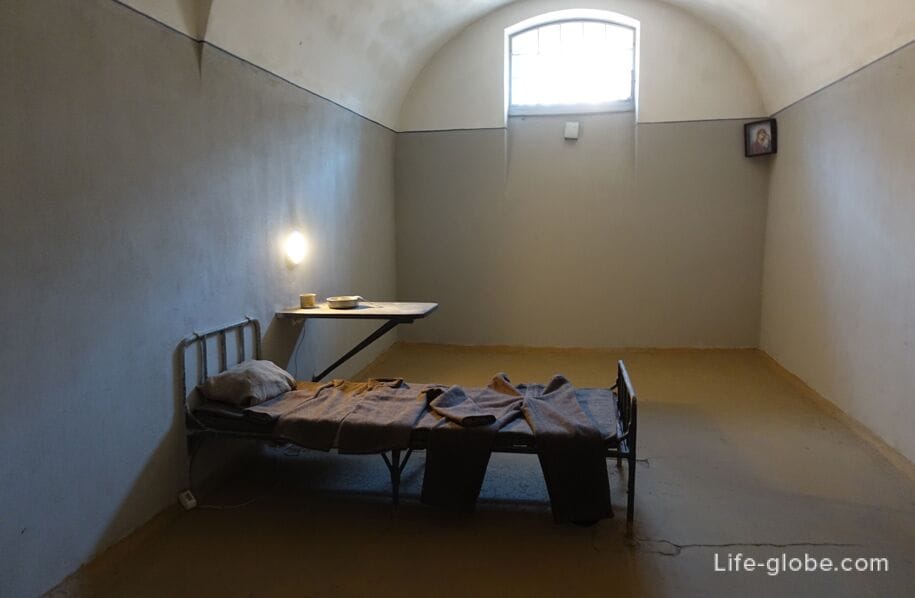
In 1897, the Trubetskoy Bastion prison was connected to the water supply. Faience sinks and toilets were installed in the cells. The drain tanks were located in the corridors.
In 1904, electricity was installed in the prison building. The cells began to be illuminated by lamps with two lamps covered with thick glass, which were placed above the table. The usual lamp was lit in the morning and in the evening, and at night a lamp with a blue light was turned on for the possibility of observing the prisoner.
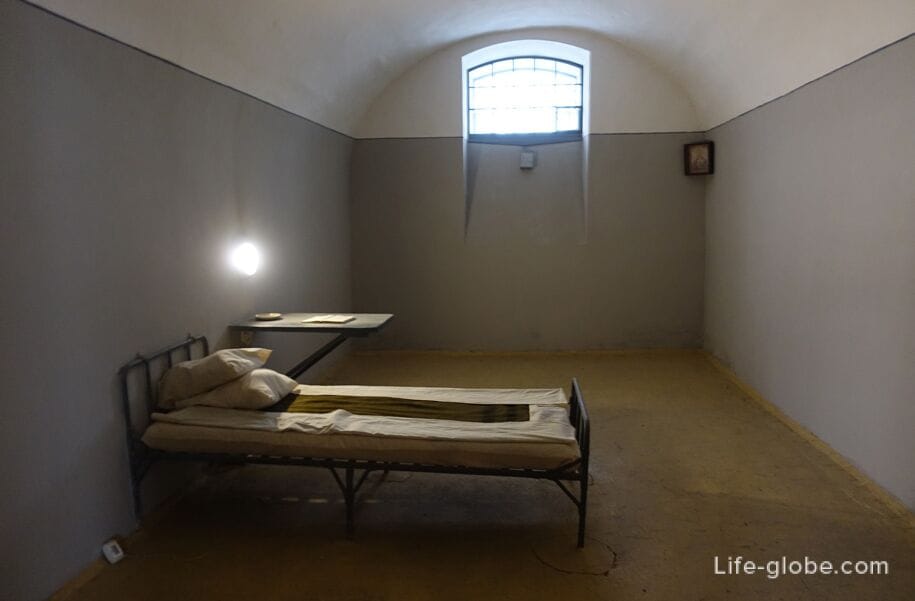
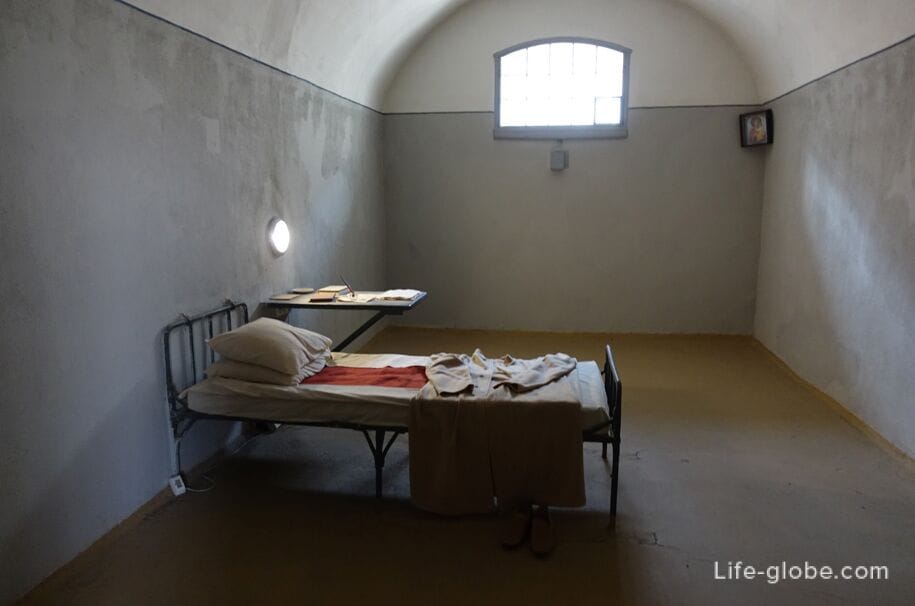
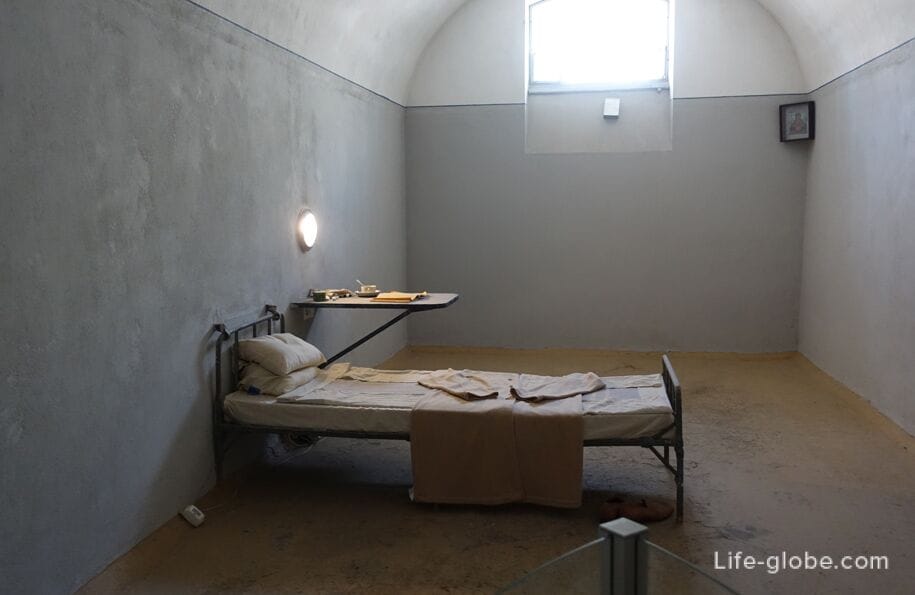
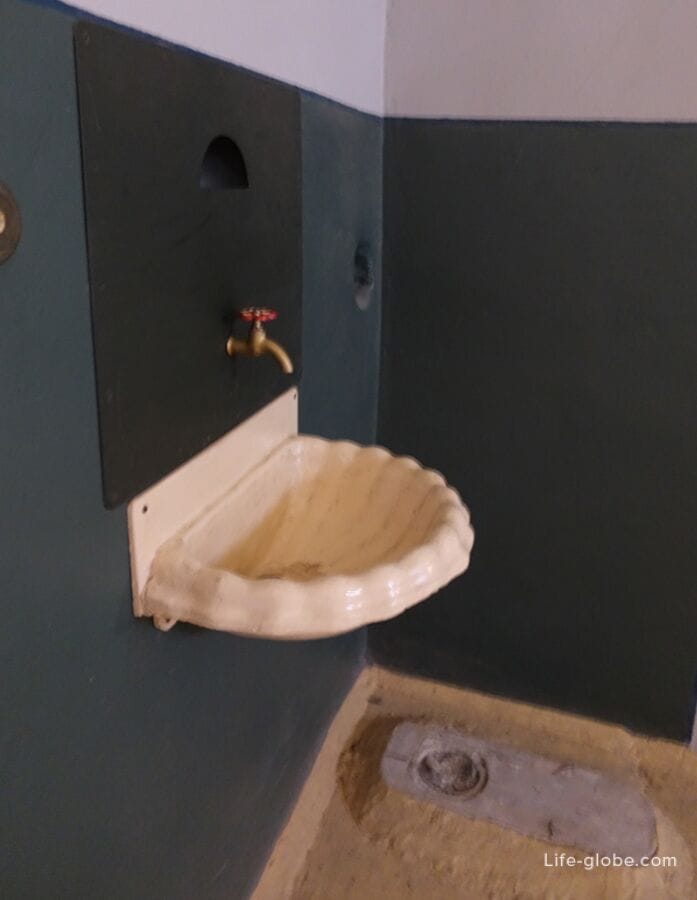
On each floor of the prison there was a punishment cell for prisoners. The room was not heated and froze in the cold season.
The size of the punishment cell was much smaller than the cell. It contained an iron bed, a toilet, and a small sheet of iron embedded in the wall that served as a table.
To toughen the punishment of the prisoner, they could take away his bed, leaving him lying on a bare iron bed and practically depriving him of sleep.
When punished with a dark punishment cell, the window was tightly closed with a metal shutter.
The term of imprisonment in the punishment cell ranged from one to seven days, depending on the prisoner's guilt:
- 2 days in a dark cell on bread and water - for making notes in a book; rudeness and non-compliance with the established rules (entering into conversations with a non-commissioned officer, despite the prohibitions);
- to the punishment cell for 3 days on bread and water - for using impertinent expressions against the commandant in a statement addressed to the commandant and the director of the Police Department;
- 3 days in a dark cell on bread and water - for picking up a note in the garden on a walk; for tapping on the wall; for making notes in the Gospel issued for reading; for inciting the non-commissioned officers on duty to bribe if they drop a letter to their relatives;
- 7 days in a dark cell on bread and water, with the delivery of hot food in 2 days on the 3rd-for deceptive behavior towards the staff officer conducting the inquiry (asked to read the protocol and tore it to shreds).


Reading was the only officially permitted occupation of the prisoners of the Trubetskoy Bastion.
For the storage of books in the prison library, which was headed by a non-commissioned officer of the Observation Team, one of the zeichhouses was used.
The basis of the prison library was made up of books that were previously issued to prisoners of the Secret House of the Alekseevsky Ravelin of the Peter and Paul Fortress. In the future, the books were purchased by the prison administration at the expense of the arrested at their request, or passed on by the relatives of the arrested.
The library had scientific and fiction literature, including in foreign languages, textbooks and dictionaries, as well as periodicals ("Domestic Notes", "Knowledge", "Bulletin of Europe" and others), which were received after a year after their publication.
Despite the fact that the library received only works permitted by censorship, the commandant of the fortress and the Police Department, at their discretion, several times seized from the prison library "morally dangerous" books: works by M. Gorky, M. E. Saltykov-Shchedrin, E. Zola, F. Engels, "Capital" by K. Marx and others.
The head of the prison, according to the instructions, had to carefully review each book before issuing and after its return, in order to prevent the prisoners from trying to communicate with each other using notes.
On the walls of the former prison library there are traces of bookshelves (the shelves themselves are not preserved).
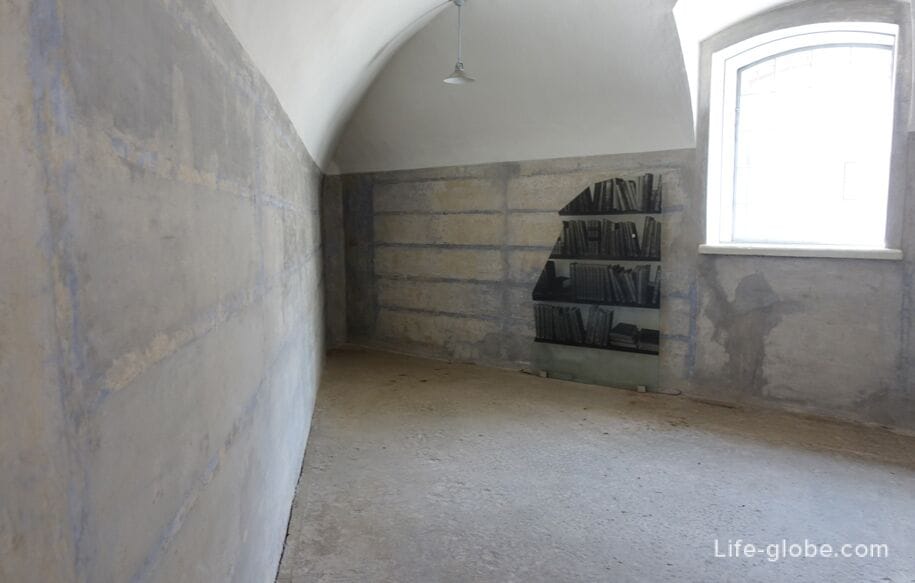
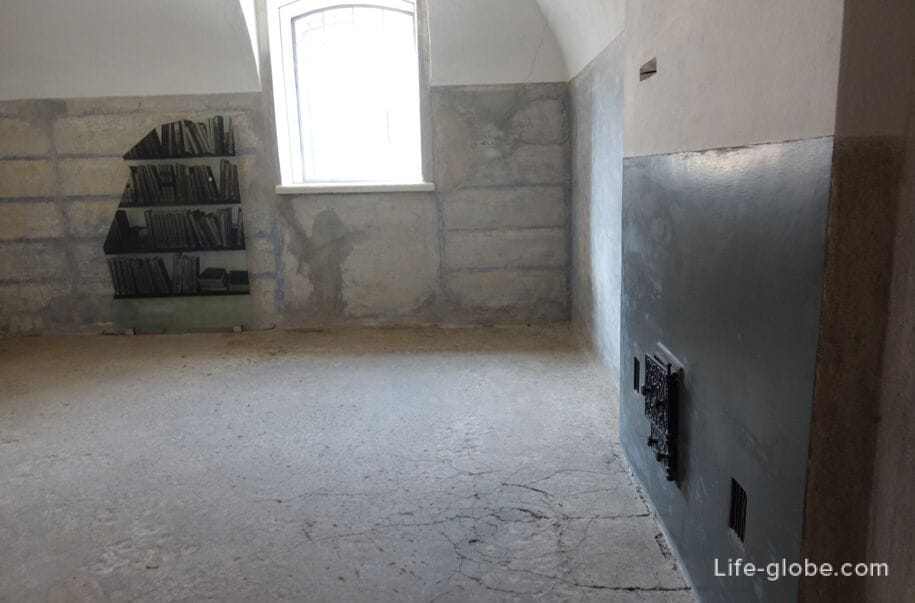
The corner cell No. 37, two walls of which overlook the exterior facade, was colder than the others, and, if there were empty seats, prisoners were not placed here.
At the beginning of the 20th century, a prison chapel was built in the cell, while the table and bed remained in their places. There are priests in the chapelPeter and Paul Cathedral (located on the territory of the Peter and Paul Fortress), whose duties included visiting the serf prisoners, confessed and received communion of the prisoners. Those of them who expressed a desire to speak during the fast were brought to the chapel one by one.
The interior of the chapel in the cell has not been preserved. The original appearance of the room can be seen only in a small fragment taken from a photo taken in 1918.
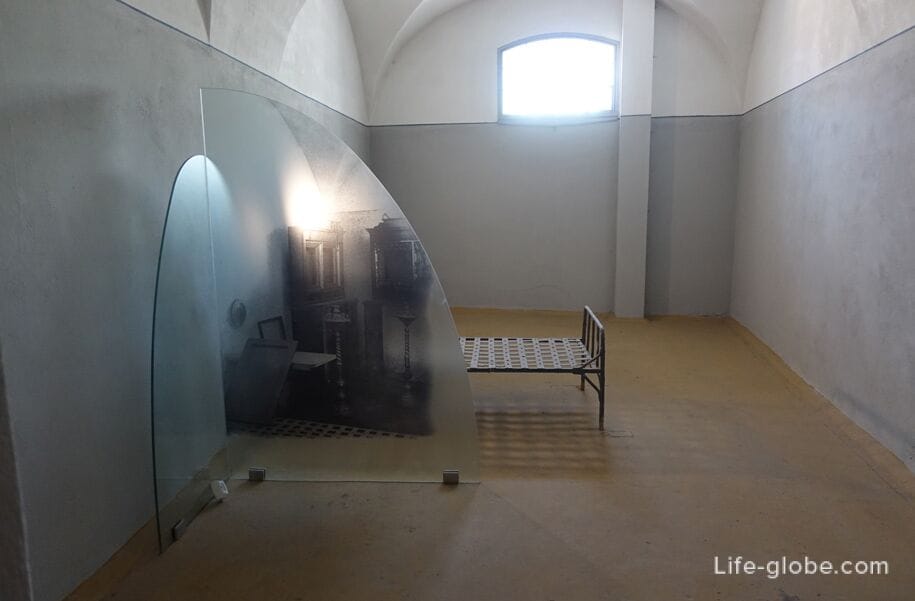
On the second floor of the front building of the Trubetskoy Bastion prison was the office apartment of the head of the prison.
In order to avoid the possible meeting of visitors to the apartment with prisoners in the prison corridors, in 1878 a separate staircase was arranged leading to the apartment directly from the street. It was built on the site of the last cells in the corridors of the first and second floor. The new staircase was separated from the prison corridors by stone walls.

On the walls of the corridor of the second floor there is a small exhibition, which presents a complex of historical photographs of the Trubetskoy Bastion prison:
- photographs taken during the construction of the building in the period from the summer of 1870 to the autumn of 1871;
- images dating back to March 1918, when the prison was briefly closed by the Bolsheviks;
- pictures taken in the mid-to-late 1920s, after the final closure of the prison. These images show details of the interior of the building, its corridors and chambers that have not survived to this day, which were restored during the creation of the museum exhibition.

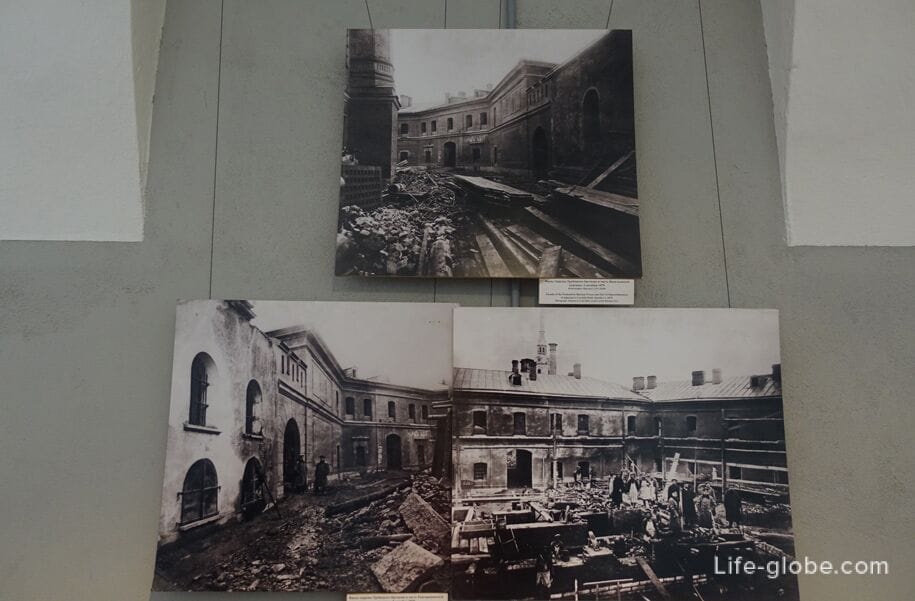
On the second floor of the prison, visitors to the museum can watch the film "Trubetskoy Bastion Prison - Russian Bastille".

In solitary confinement, the only way the prisoners could communicate with each other was by tapping. To do this, they used the so - called "prison alphabet", consisting of 28 letters (the least used letters were excluded-e, y, b, b, e).
The letters of the alphabet were arranged in order in a table of six rows and five columns. Each letter was tapped out in two steps: first the row number, then the column number. They tapped their heels on the floor; with a spoon, a mug, a button on the wall or the foot of the bed.
The acoustics of the prison made it possible to hear not only the sound coming from the adjacent rooms, but also from the cells on the other floor. The constant silence in the prison was painfully acute.
Tapping was considered a violation of the prison regime and was strictly suppressed by the guards. As a punishment, the prisoner could be deprived of visits, books, put in a punishment cell or (and) transferred to another cell where there were no neighbors.
But, no harsh measures could force the prisoners to give up tapping. According to V. N. Figner, " the struggle for knocking... is directly a struggle for existence."
The alphabet of the prison alphabet can be seen on the wall of the corridor of the Trubetskoy Bastion prison.
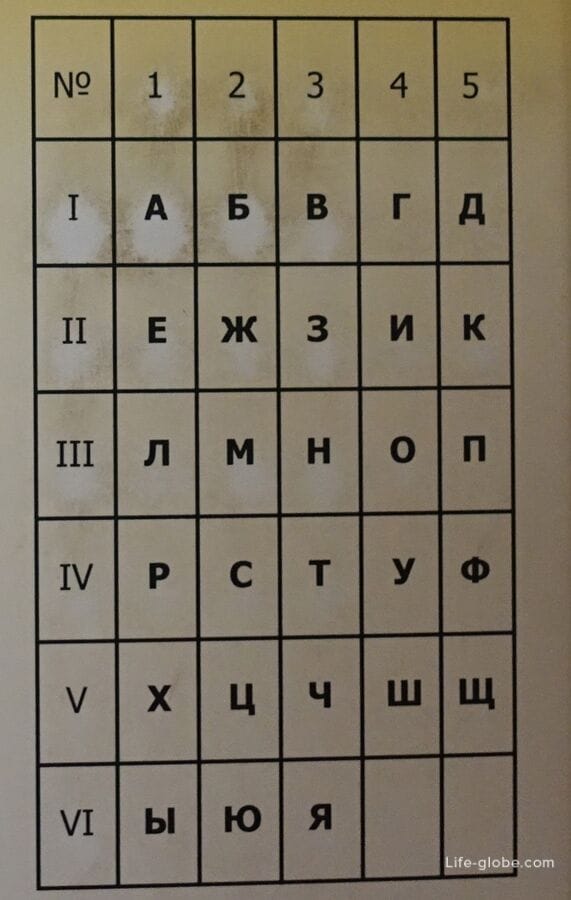
Temporary (rotating) exhibitions are held in several rooms of the Trubetskoy Bastion prison. For example, the exhibition "The prison of the Trubetskoy Bastion in photos".

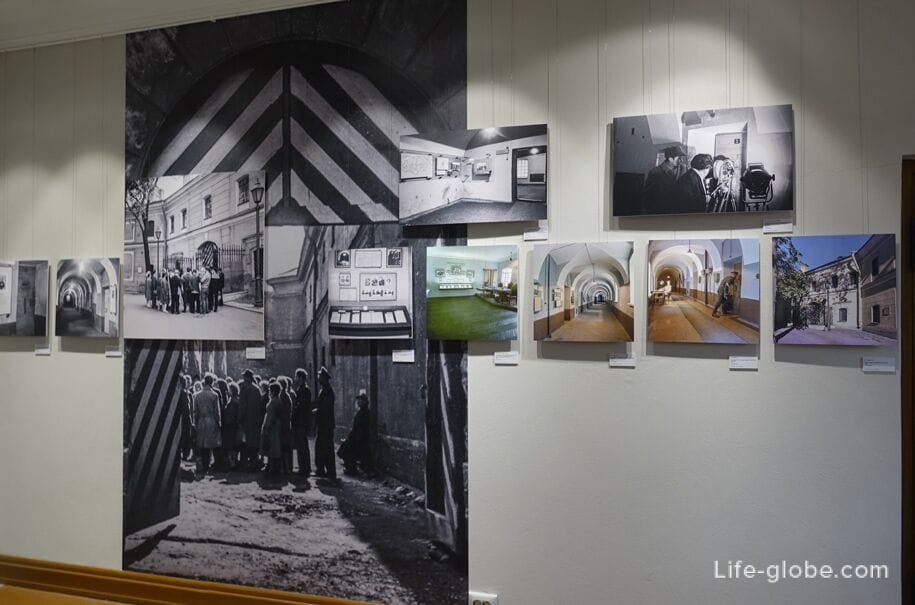
Entrance to the museum "History of the Trubetskoy Bastion Prison" is paid. You can buy a ticket only to the prison or a complex ticket to visit other museums of the Peter and Paul Fortress, including Peter and Paul Cathedral and the Grand Ducal Tomb, as well as temporary exhibitions.
We recommend that you check the museum's opening hours, the cost and conditions of the visit, as well as other necessary information on the official website of the State Museum of the History of St. Petersburg, which includes most of the museums on the territory of the Peter and Paul Fortress, including the Trubetskoy Bastion Prison Museum.
Museum website: spbmuseum.
The entrance to the territory of the Peter and Paul Fortress is free (free of charge).
You can also visit the Trubetskoy Bastion prison with a guided tour
All tours of the Peter and Paul Fortress
The Trubetskoy Bastion prison is located in the south-western part of the Peter and Paul Fortress, at the address: Peter and Paul Fortress, 6.
The nearest metrostations are Gorkovskaya and Sportivnaya.
Trubetskoy bastion on the scheme of the Peter and Paul Fortress

All accommodation facilities in St. Petersburg, including in the city center and near the Peter and Paul Fortress, can be viewed and booked here